Application of the First Replica Controller in Korean Power Systems
Abstract
:1. Introduction
2. Replica Controller in the Korean Power System
2.1. Planning for HVDC and FACTS in the Korean Power System
2.2. Large-Scale Real-Time Simulator and Wide Area Network Modeling to Interface with the Replica Controller
2.3. Purpose of the Replica Controller
- Dynamic Performance Test (DPT) under large-scale power system: DPT is performed under a sufficiently wide area network to reflect the dynamic characteristics of the power system considering other HVDC and FACTS facilities nearby.
- Preverification: If the controller needs to be modified, improved, or updated during operation stage, such as adding a new function or in/output signal, the adequacy can be verified and de-risk can be achieved using a replica controller, which cannot be achieved with an actual field controller.
- Parameter Tuning: The huge changes in power systems, such as an adjacent network topology or the installation of a new power plant, require adjusting the controller parameters. KEPCO conducts verification and parameter tuning periodically for HVDC and FACTS operations for potential severe events, such as 765 kV line fault and Special Protection Scheme (SPS), by planning winter/summer operation strategies biannually.
- Event Analysis: The replica controller can analyze the root cause of any malfunction or fault due to its detailed internal protection functions. Particularly, KEPCO can simulate not only a single replica controller but also the entire Korean power system, including all HVDC and FACTS manufacturer models with EMT, which facilitates the interaction investigation of the power system and power electronic devices.
- Operator Training: Training to improve the skill level of the field operators can be conducted. Field operators have few opportunities to deal with actual controllers before project completion. Therefore, the replica controller could be a perfect tool for practical training to gain experience in emergency operation, reaction of communication disruption, alarm analysis, and insertion and block.
2.4. TCSC Replica Controller
3. Practical Cases
3.1. Dynamic Performance Test (DPT) with Adjacent Multiple FACTS
3.2. Preverification of a Modified Function for an Actual Controller
3.3. Parameter Tuning for Control Interaction
3.4. Subsynchronous Torsional Interaction (SSTI) Validation under a Large-Scale Power System
4. Conclusions
Author Contributions
Funding
Conflicts of Interest
References
- Barens, M.; Van Hertem, D.; Teeuwsen, S.P.; Callavik, M. HVDC Systems in smart grids. In Proceedings of the IEEE, New York, NY, USA, 11 November 2017; pp. 2082–2098. [Google Scholar] [CrossRef]
- Henderson, M.; Bertagnolli, D.; Ramey, D. Planning HVDC and FACTS in New England. In Proceedings of the 2009 IEEE/PES Power Systems Conference and Exposition, Seattle, DC, USA, 24 April 2009; pp. 1–3. [Google Scholar] [CrossRef]
- Sun, J.; Li, M.; Zhang, Z.; Xu, T.; He, J.; Wang, H.; Li, H. Renewable energy transmission by HVDC across the continent: System challenges and opportunities. CSEE J. Power Energy Syst. 2017, 3, 353–364. [Google Scholar] [CrossRef]
- Collados-Rodríguez, C.; Prieto-Araujo, E.; Cheah-Mañé, M.; San José, R.F.; Bellmunt, O.G.; Sanz, S.; Longás, C.; Cordón, A.; Coronado, A. Interaction analysis in islanded power systems with HVDC interconnections. In Proceedings of the 3rd International Hybrid Power Systems Workshop, Tenerife, Spain, 8–9 May 2018; pp. 1–5. [Google Scholar]
- Saad, H.; Dennetière, S.; Clerc, B. Interactions investigations between power electronics devices embedded in HVAC network. In Proceedings of the 13th IET International Conference on AC and DC Power Transmission (ACDC 2017), Manchester, UK, 14–16 February 2017; pp. 1–7. [Google Scholar] [CrossRef]
- Shen, L.; Barnes, M.; Milanovic, J.V.; Bell, K.R.W.; Belivanis, M. Potential interactions between VSC HVDC and STATCOM. In Proceedings of the 2014 Power Systems Computation Conference, Wroclaw, Poland, 18–22 August 2014; pp. 1–7. [Google Scholar] [CrossRef]
- Guillaud, X.; Faruque, M.O.; Teninge, A.; Hariri, A.H.; Vanfretti, L.; Paolone, M.; Dinavahi, V.; Mitra, P.; Lauss, G.; Dufour, C.; et al. Applications of Real-Time simulation technologies in power and energy systems. IEEE Power Energy Technol. Syst. J. 2015, 2, 103–115. [Google Scholar] [CrossRef] [Green Version]
- Iyoda, I.; Belanger, J. History of power system simulators to analyze and test of power electronics equipment. In Proceedings of the 2017 IEEE HISTory of ELectrotechnolgy CONference (HISTELCON), Kobe, Japan, 7–8 August 2017; pp. 117–120. [Google Scholar] [CrossRef]
- Omar Faruque, M.D.; Strasser, T.; Lauss, G.; Jalili-Marandi, V.; Forsyth, P.; Dufour, C.; Dinavahi, V.; Monti, A.; Kotsampopoulos, P.; Martinez, J.A.; et al. Real-Time simulation technologies for power systems design, testing and analysis. IEEE Power Energy Technol. Syst. J. 2015, 2, 63–73. [Google Scholar] [CrossRef]
- Guo, Y.; Zhang, J.; Hu, Y.; Han, W.; Ou, K.; Jackson, G.; Zhang, Y. Analysis on the effects of STATCOM on CSG based on RTDS. In Proceedings of the IEEE PES ISGT Europe 2013, Lyngby, Denmark, 6 January 2014; pp. 1–5. [Google Scholar] [CrossRef]
- RTDS Technologies Inc. Large-scale-simulators. Available online: https://legacy.rtds.com/wp-content/uploads/2015/12/Large-scale-simulators.pdf (accessed on 15 January 2020).
- Wang, Y.; Syed, M.H.; Guillo-Sansano, E.; Xu, Y.; Burt, G.M. Inverter-Based Voltage Control of Distribution Networks: A Three-Level Coordinated Method and Power Hardware-in-the-Loop Validation. IEEE Trans. Sustain. Energy 2019. [Google Scholar] [CrossRef] [Green Version]
- Song, J.; Nam, S.; Lee, J.; Shin, J.; Kim, T.K. Construction of test bed with RTDS for verifying coordination algorithm for loop distribution system. J. Int. Counc. Electr. Eng. 2010, 2, 467–472. [Google Scholar] [CrossRef] [Green Version]
- Saran, A.; Kankanala, P.; Srivastava, A.K.; Schulz, N.N. Designing and testing protective overcurrent relay using real time digital simulation. In Proceedings of the 2008 International Simulation Multi-conference & 2008 Summer Simulation Multiconference, Edinburgh, Scotland, 16–19 June 200.
- Wang, Z.; Kent, K.; Mantay, C.; Zhou, C.; Wang, P.; Fang, C.; Dhaliwal, N.; Menzies, D. HVDC control replica development for Nelson Reiver Bipole 1&2. In Proceedings of the CIGRE Winnipeg 2017 Colloquium, Winnipeg, MB, Canada, 30 September–6 October 2017; pp. 329–338. [Google Scholar]
- Cowan, I.L.; Marshall, S.C.M. Installation and interfacing HVDC control replicas at the national HVDC centre. In Proceedings of the 15th IET International Conference on AC and DC Power Transmission (ACDC 2019), Coventry, UK, 18 April 2019; pp. 1–6. [Google Scholar] [CrossRef]
- Vernay, Y.; D’Aubigny, A.D.; Benalla, Z.; Dennetière, S. New HVDC LCC replica platform to improve the study and maintenance of the IFA2000 link (Conf, IPST). In Proceedings of the International Conference on Power Systems Transients 2017 (IPST 2017), Seoul, Korea, 26–29 June 2017. [Google Scholar]
- Beijing DC Consultants (BDCC), Zhejiang EPRI and RTDS Technologies Inc. Application of Replica HVDC Controller with Real Time Digital Simulation-Experiences in SGCC. In Proceedings of the 2016 Cigre Session, Paris, France, 22–26 August 2016. [Google Scholar]
- Best Paths. Final Recommendations for Interoperability of Multivendor HVDC. Available online: http://www.bestpaths-project.eu/contents/publications/d93--final-demo2-recommendations--vfinal.pdf (accessed on 12 December 2019).
- Kim, S.; Kim, H.; Lee, H.; Lee, J.; Lee, B.J.; Jang, G.; Lan, X.; Kim, T.; Jeon, D.; Kim, Y.; et al. Expanding power systems in the Republic of Korea feasibility studies and future challenges. IEEE Power Energy Mag. 2019, 17, 61–72. [Google Scholar] [CrossRef]
- Moon, B.; Ko, B.; Choi, J. The study on the efficient HVDC capacity considering extremely low probability of 765 kV double circuit. J. Electr. Eng. Technol. 2017, 12, 1046–1052. [Google Scholar] [CrossRef]
- Kim, S.H.; Oh, H.; Moon, B. A Study on the application of HVDC FACTS System in the Northeast Power System of Korea. J. Int. Counc. Electr. Eng. 2011, 1, 437–440. [Google Scholar] [CrossRef] [Green Version]
- Park, I.K.; Lee, J.; Song, J.; Kim, Y.; Kim, T. Large-scale ACDC EMT level system simulations by a real time digital simulator (RTDS) in KEPRI-KEPCO. J. Electr. Power Energy 2017, 3, 17–21. [Google Scholar] [CrossRef]
- Hur, K.; Lee, J.; Song, J.; Ko, B.; Shin, J. Advanced Real Time Power System Simulator for Korea Electric Power Systems: Challenges and Opportunities. IEEE PES. 2018. Available online: http://site.ieee.org/pes-itst/files/2018/08/2018-Panel-1.pdf (accessed on 23 January 2019).
- CIGRE Working Group B4.38. Modeling and Simulation Studies to Be Performed during the Lifecycle of HVDC Systems; CIGRE Technical Brochure: Paris, France, 2013. [Google Scholar]
- Kotsampopoulos, P.; Georgilakis, P.; Lagos, D.T.; Kleftakis, V.; Hatziargyriou, N. FACTS providing grid services: Applications and testing. Energies 2019, 12, 2554. [Google Scholar] [CrossRef] [Green Version]
- Ou, K.; Li, H. Function and dynamic performance test of the updated Tian-Guang HVDC control and protection systems. Adv. Mater. Res. 2012, 516, 1527–1530. [Google Scholar] [CrossRef]
- Guay, F.; Chiasson, P.; Verville, N.; Tremblay, S.; Askvid, P. New hydro Quebec real time Simulation interface HVDC commissioning studies. In Proceedings of the International Conference on Power Systems Transients 2017 (IPST 2017), Seoul, Korea, 25–29 June 2017. [Google Scholar]
- Angquist, L. Synchronous Voltage Reversal Control of Thyristor Controlled Series Capacitor; TRITA-ETS; Royal Institute of Technology in Stockholm: Stockholm, Sweden, July 2002; ISSN 1650-674X. [Google Scholar]

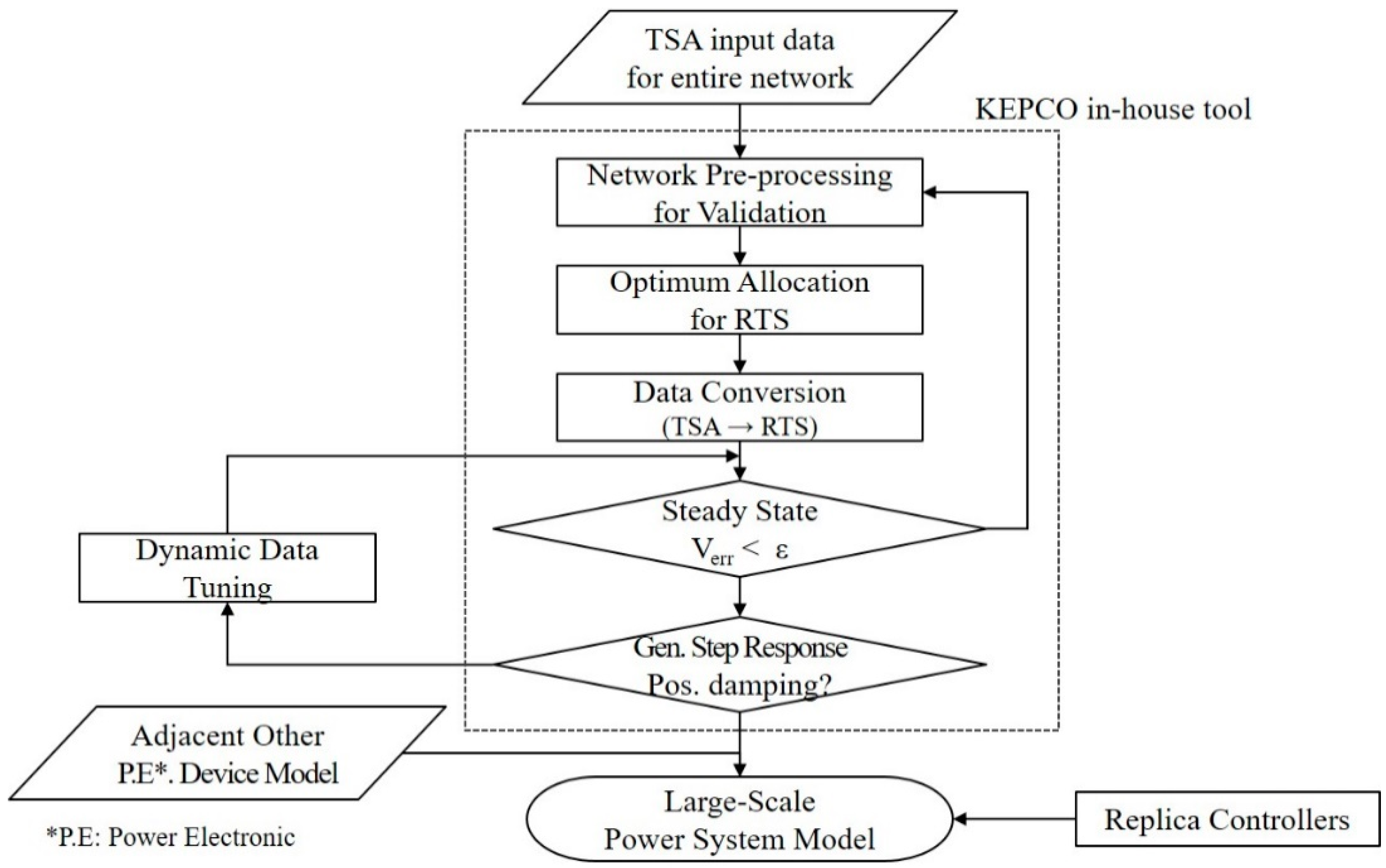
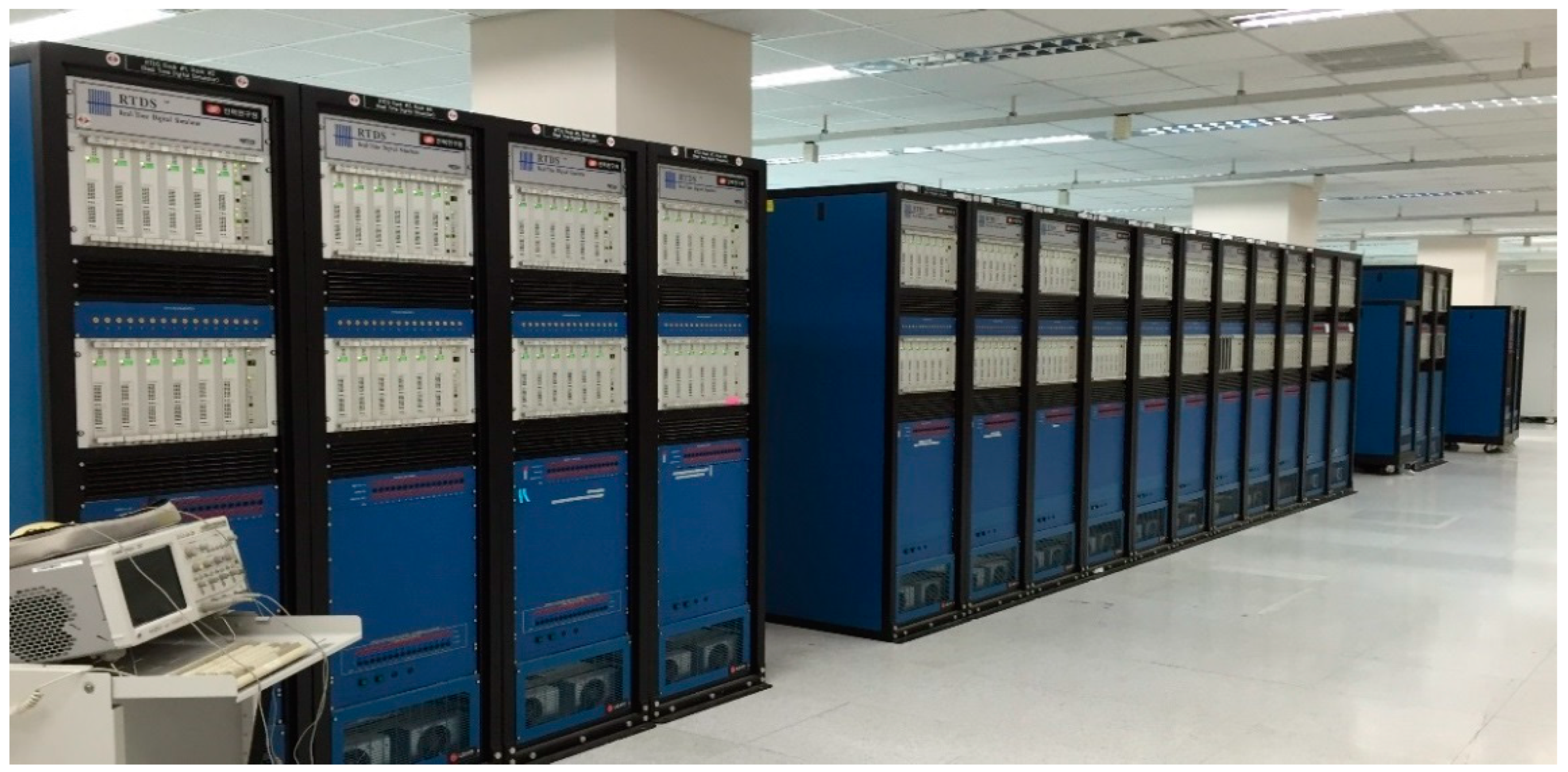
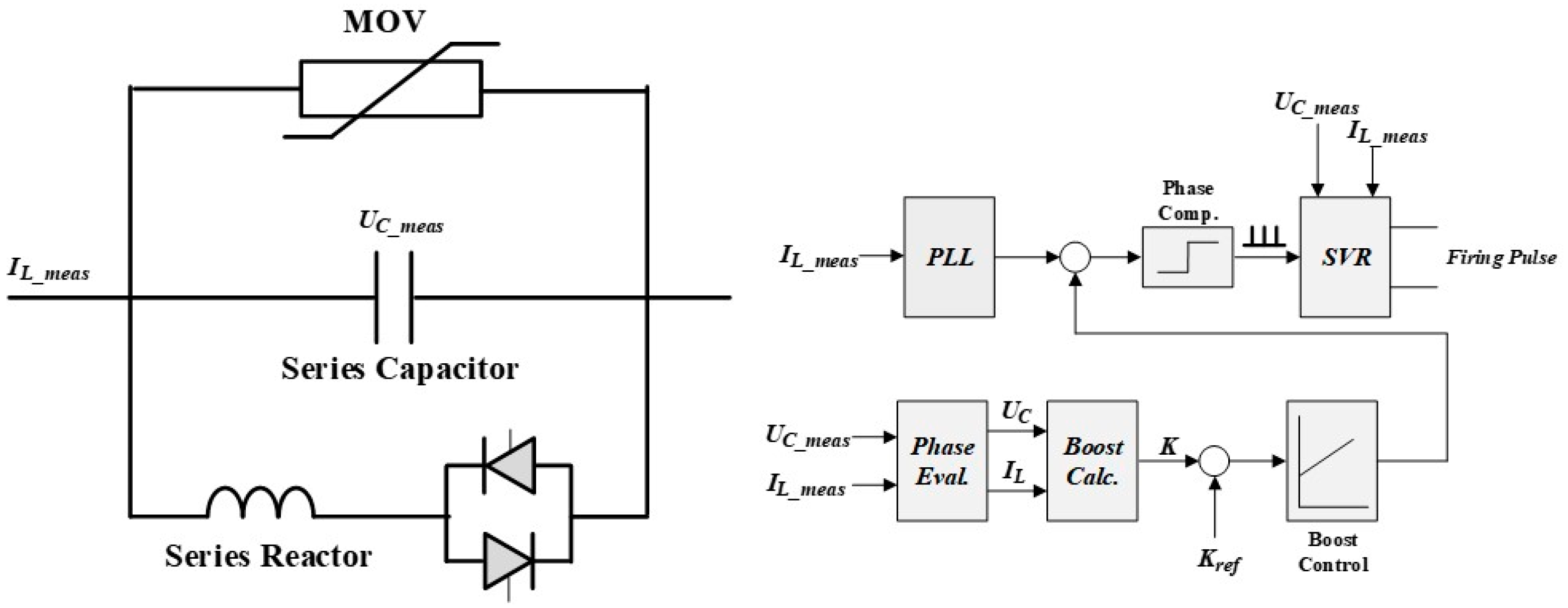
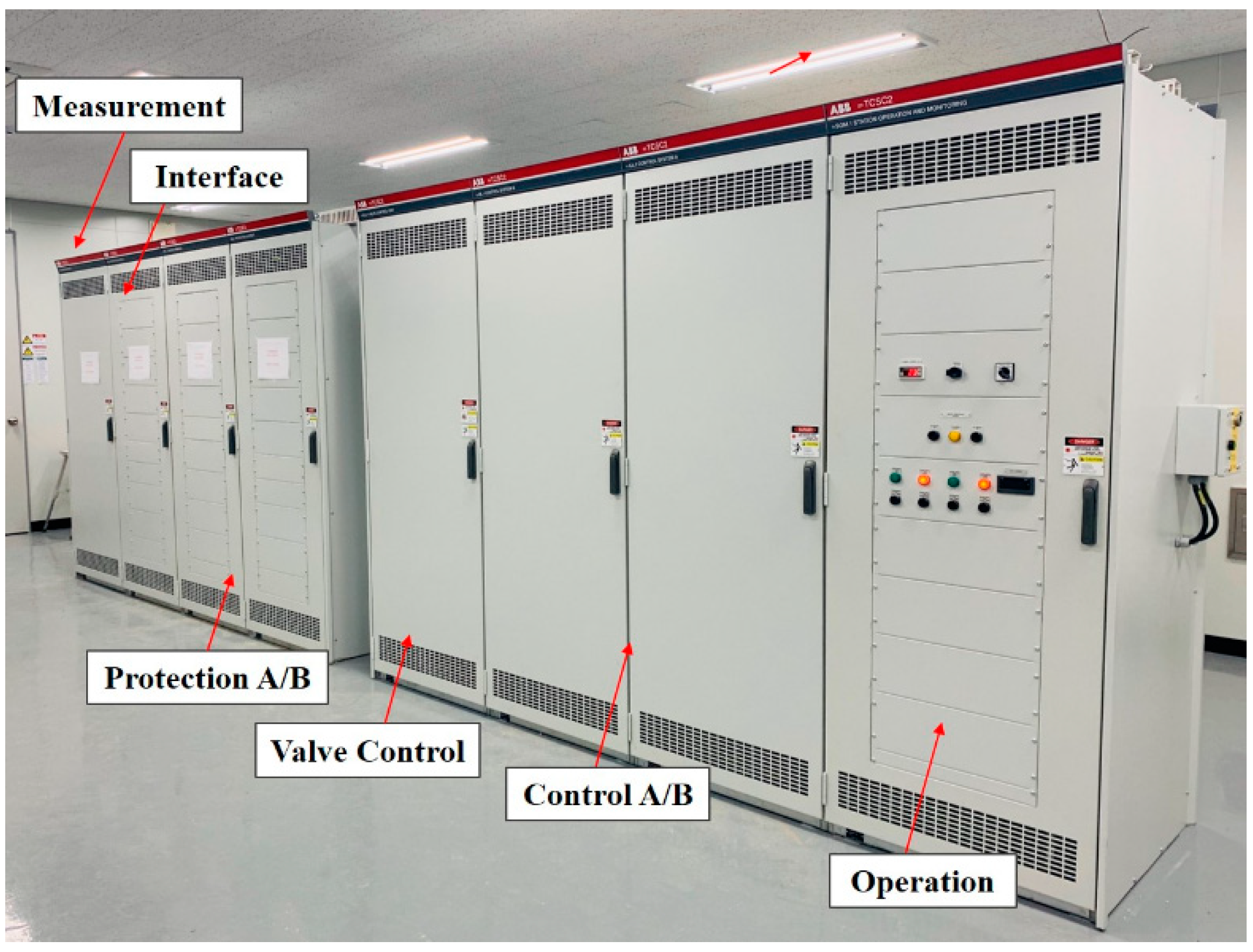
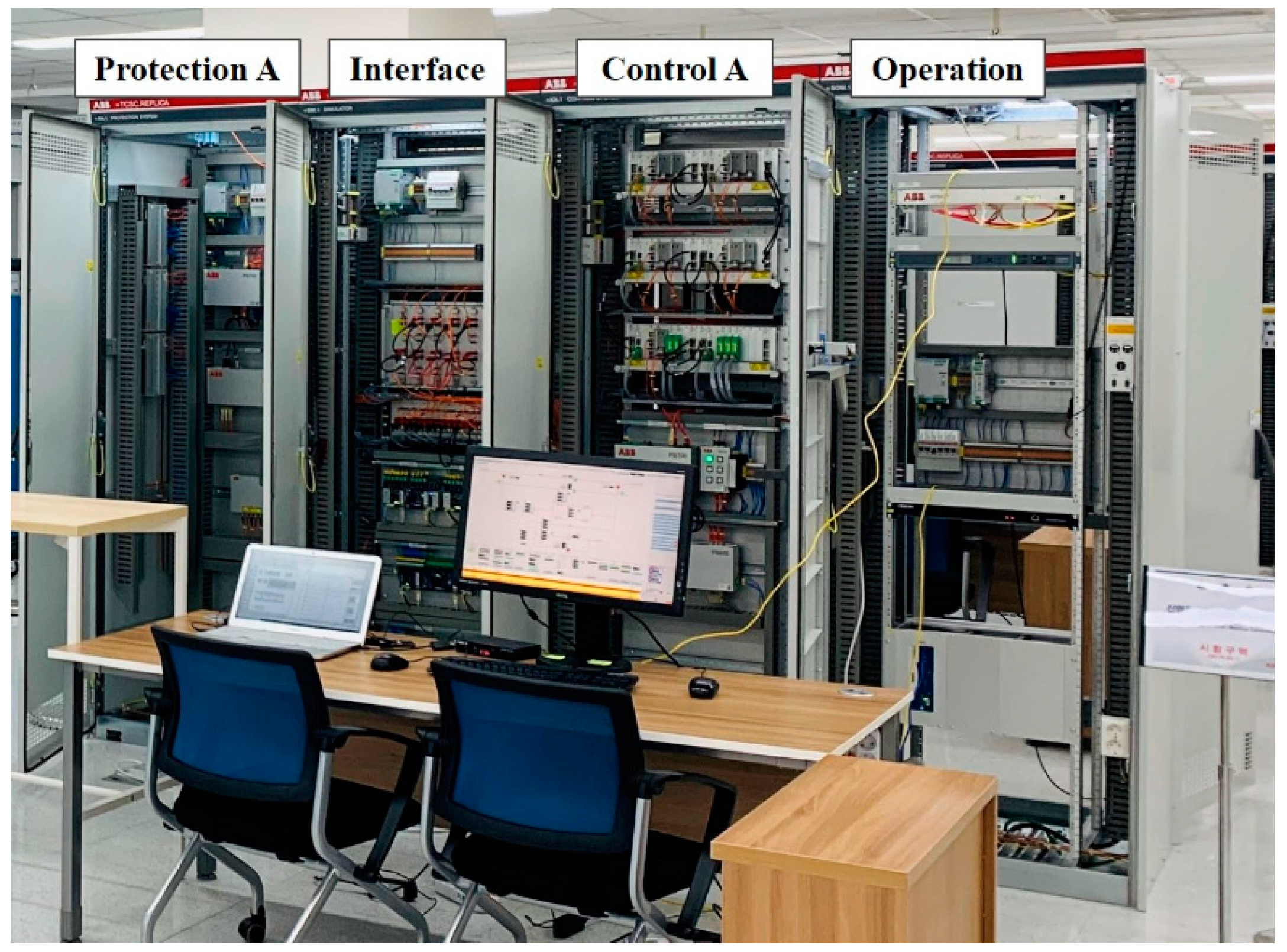
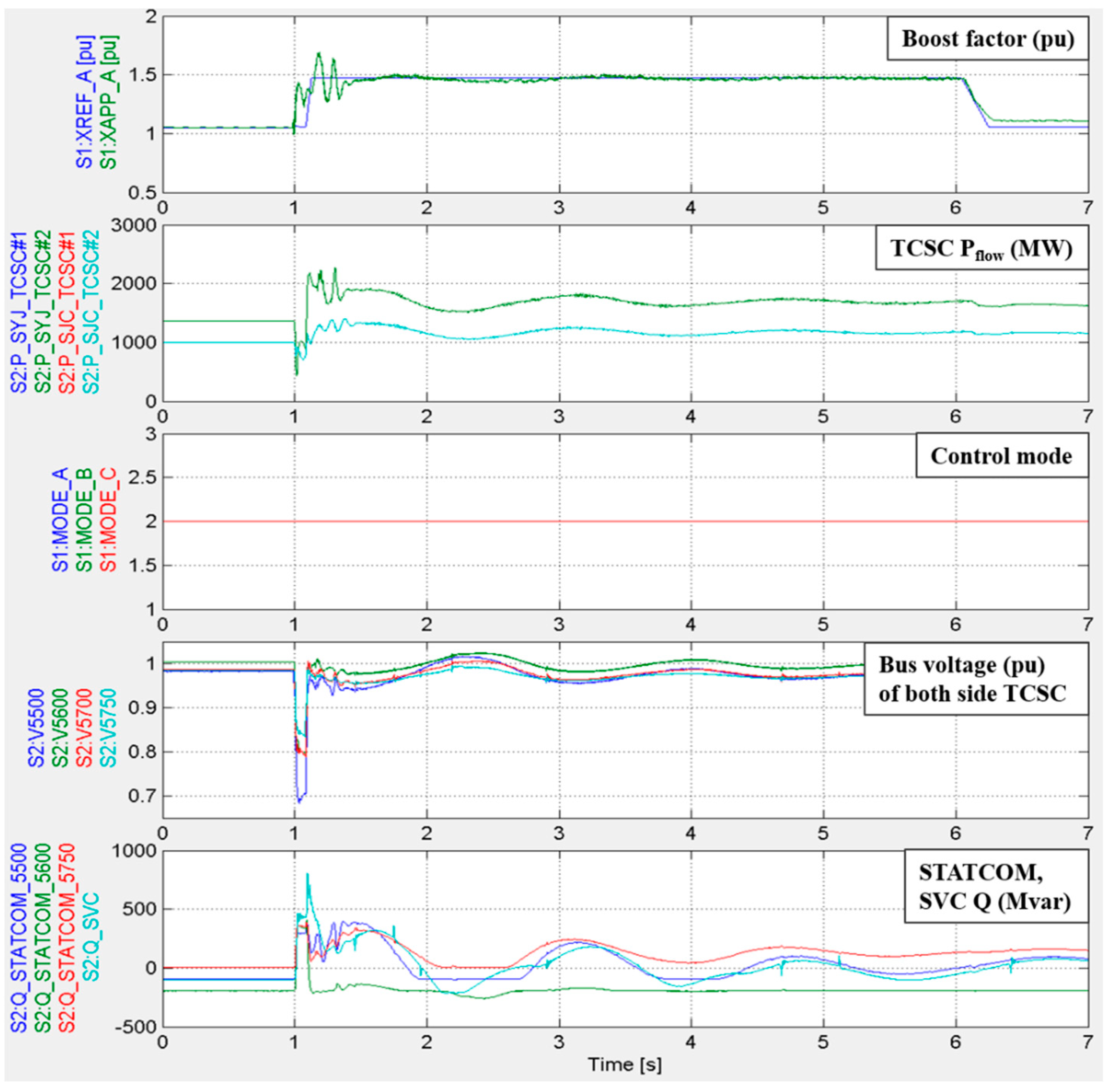
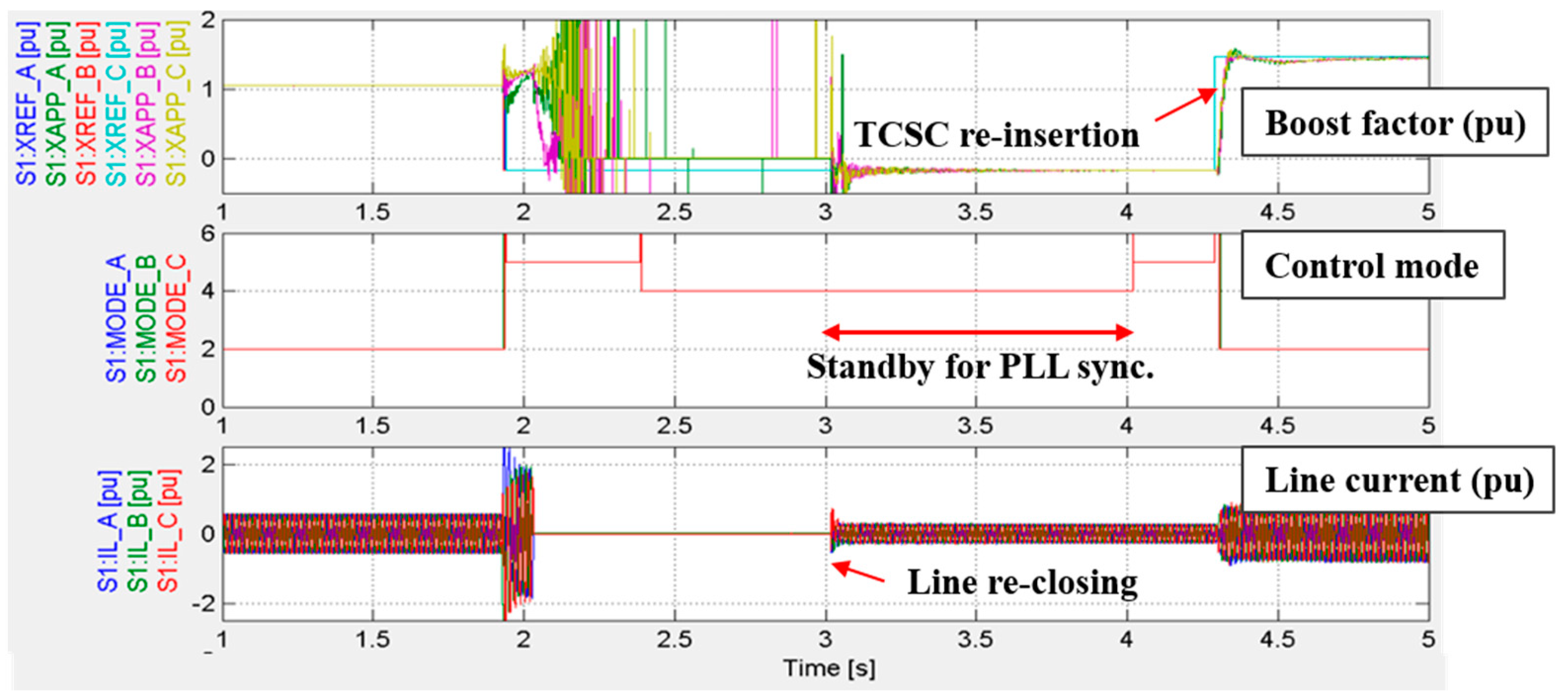
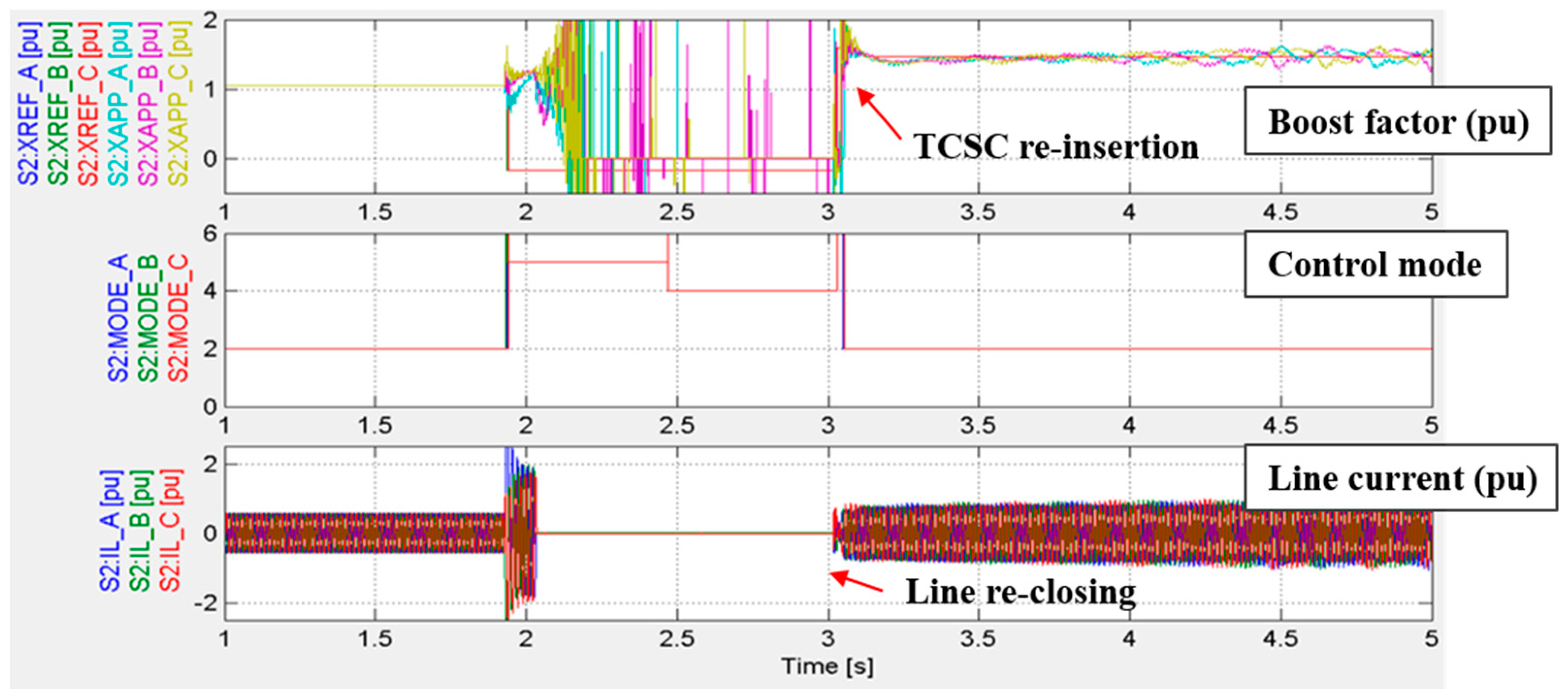


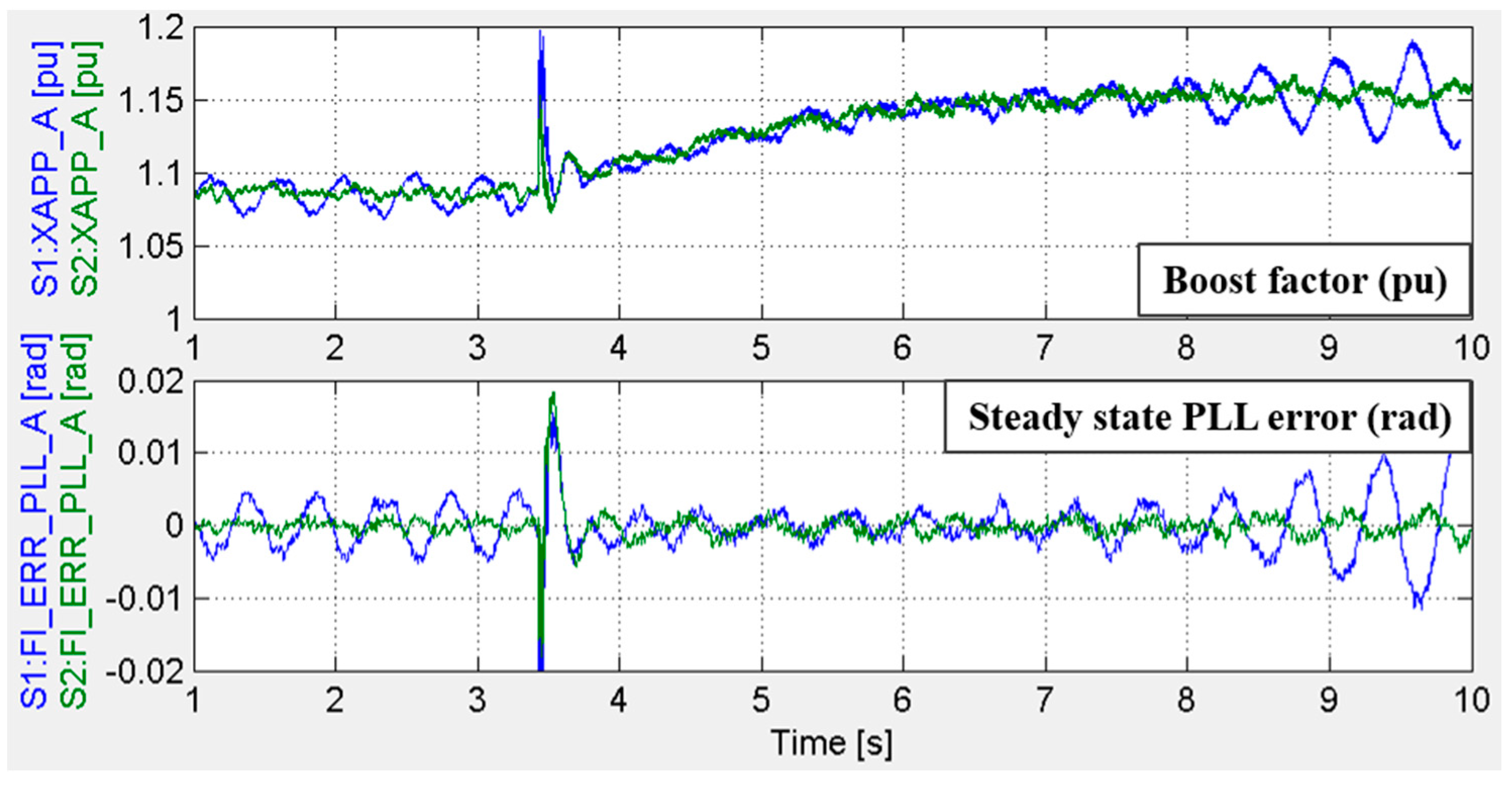
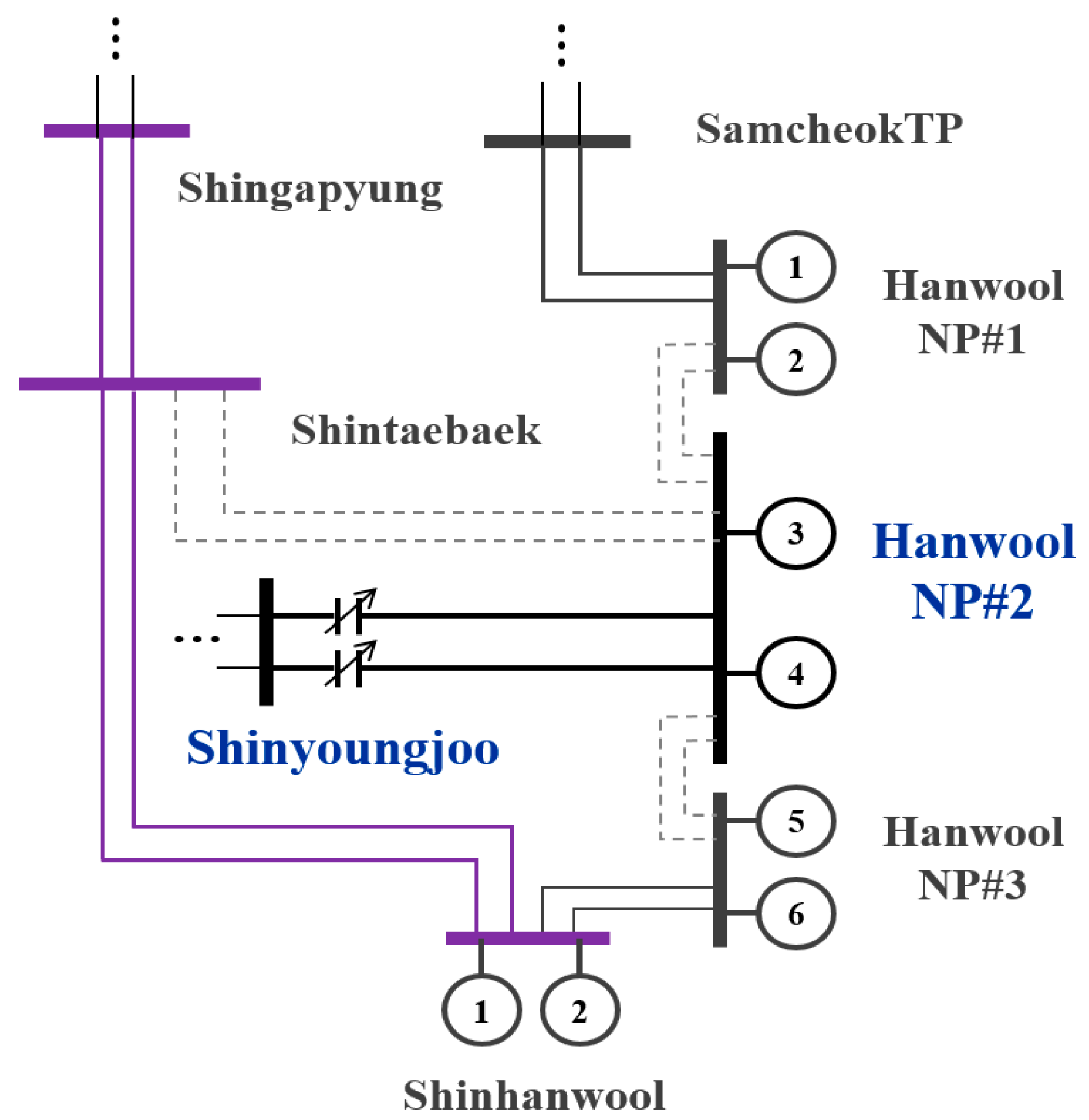
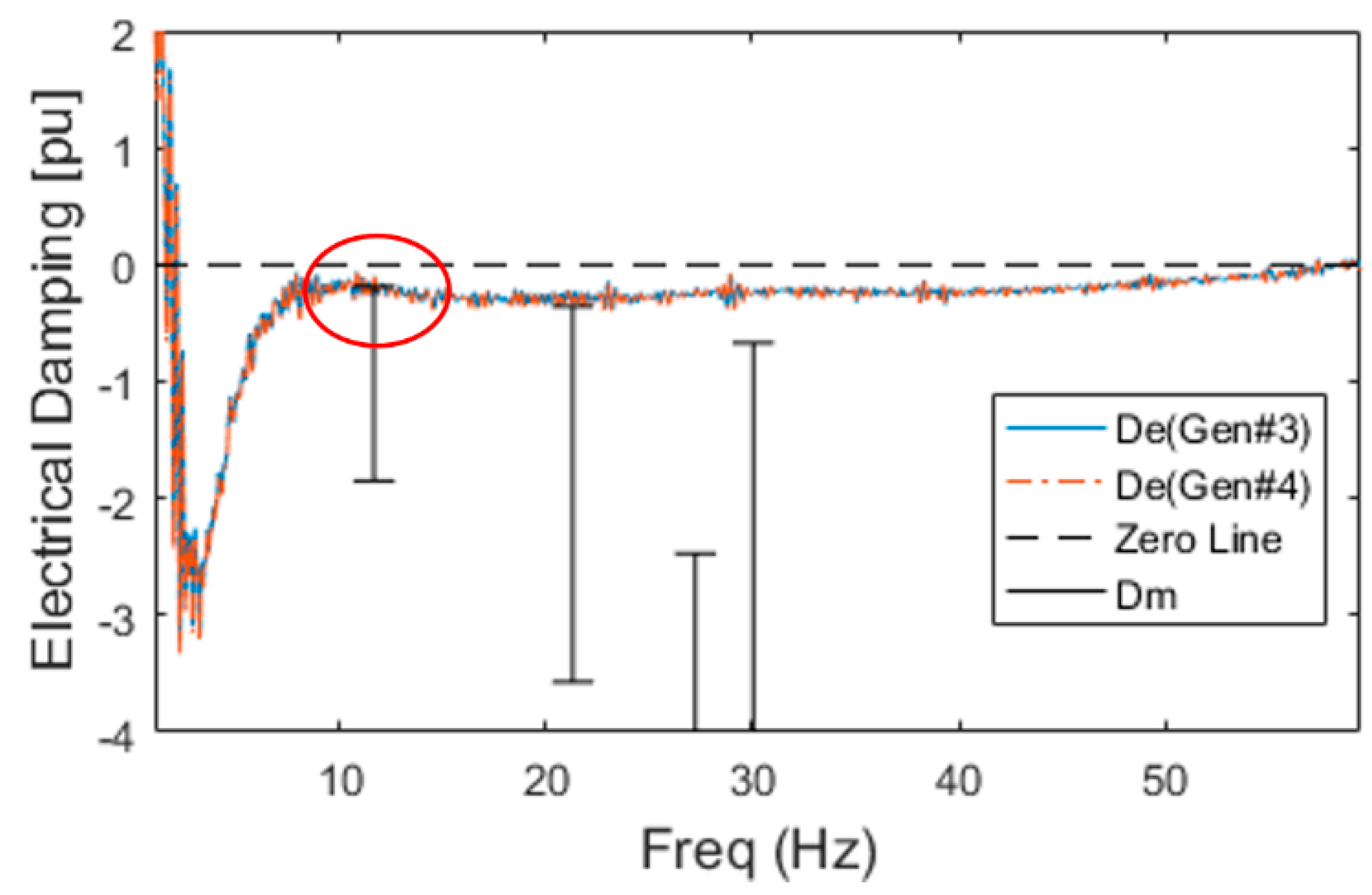
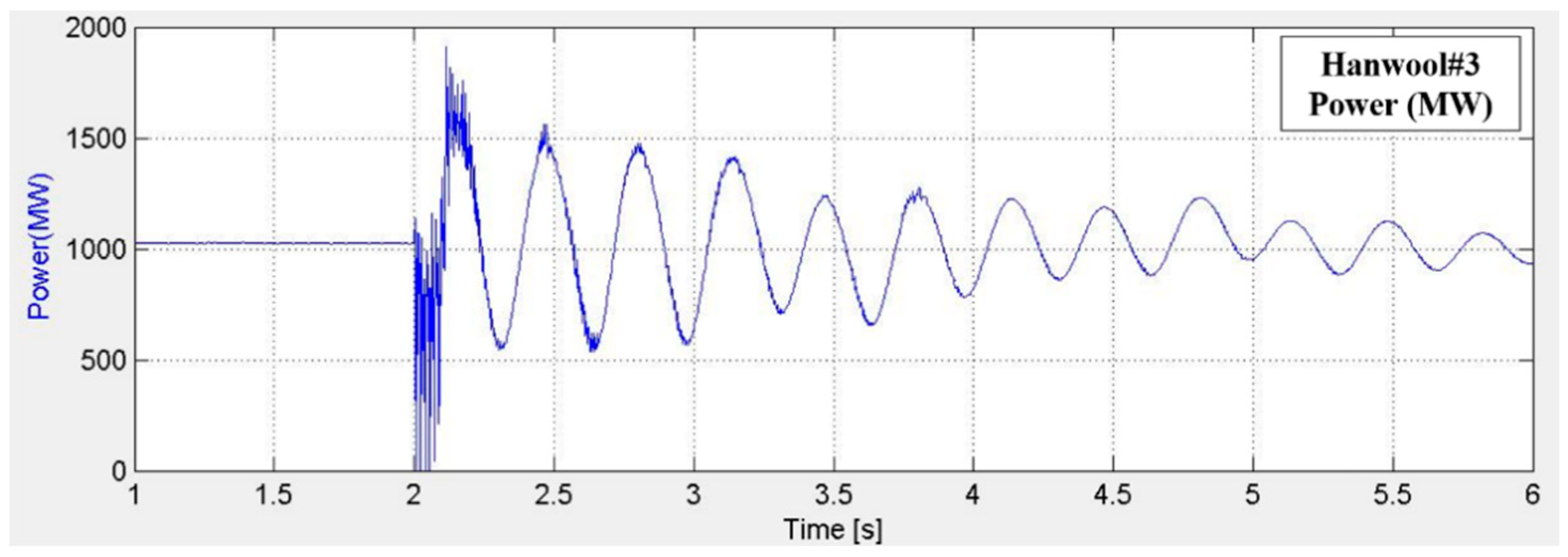
© 2020 by the authors. Licensee MDPI, Basel, Switzerland. This article is an open access article distributed under the terms and conditions of the Creative Commons Attribution (CC BY) license (http://creativecommons.org/licenses/by/4.0/).
Share and Cite
Song, J.; Oh, S.; Lee, J.; Shin, J.; Jang, G. Application of the First Replica Controller in Korean Power Systems. Energies 2020, 13, 3343. https://doi.org/10.3390/en13133343
Song J, Oh S, Lee J, Shin J, Jang G. Application of the First Replica Controller in Korean Power Systems. Energies. 2020; 13(13):3343. https://doi.org/10.3390/en13133343
Chicago/Turabian StyleSong, Jiyoung, Seungchan Oh, Jaegul Lee, Jeonghoon Shin, and Gilsoo Jang. 2020. "Application of the First Replica Controller in Korean Power Systems" Energies 13, no. 13: 3343. https://doi.org/10.3390/en13133343
APA StyleSong, J., Oh, S., Lee, J., Shin, J., & Jang, G. (2020). Application of the First Replica Controller in Korean Power Systems. Energies, 13(13), 3343. https://doi.org/10.3390/en13133343






